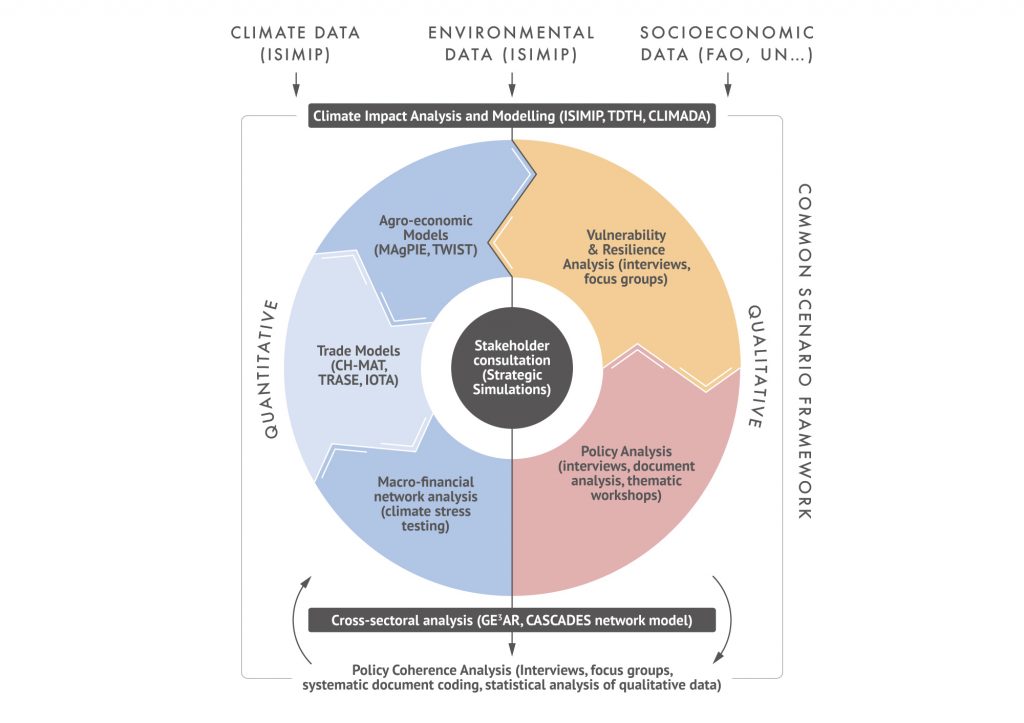If the video below does not appear, please accept cookies, or view on YouTube
CASCADES is conceptually rooted in complex system science. The project builds on, and advances, the understanding of cascading climate risks that are characterised by cross-sectoral climate impacts reverberating across geographical and political boundaries.
By addressing these risks and opportunities through cohesive strategies and coherent or integrated policies, Europe may be able to maintain or expand a sustainable competitive advantage globally by improving its ecological, economic, social and institutional resilience.
It is plausible that present institutions and organizations could be pushed beyond their capacity to maintain normal operations when faced with multiple unprecedented pressures from cascading climate risks. At the same time, climate change impacts outside Europe, e.g. through an opening of Arctic sea routes, could present opportunities for European actors and society at large, if strategic adaptations are made in time. By addressing these risks and opportunities through cohesive strategies and coherent or integrated policies, Europe may be able to maintain or expand a sustainable competitive advantage globally by improving its ecological, economic, social and institutional resilience. The concepts of cascading climate risk and coherent, resilient policies to address these risks are thus providing the theoretical underpinning for CASCADES. Moreover, as our understanding of cascading climate risks and their effects is patchy and may well develop along pathways that are counter intuitive, strong and sustained involvement by key stakeholders is planned.


